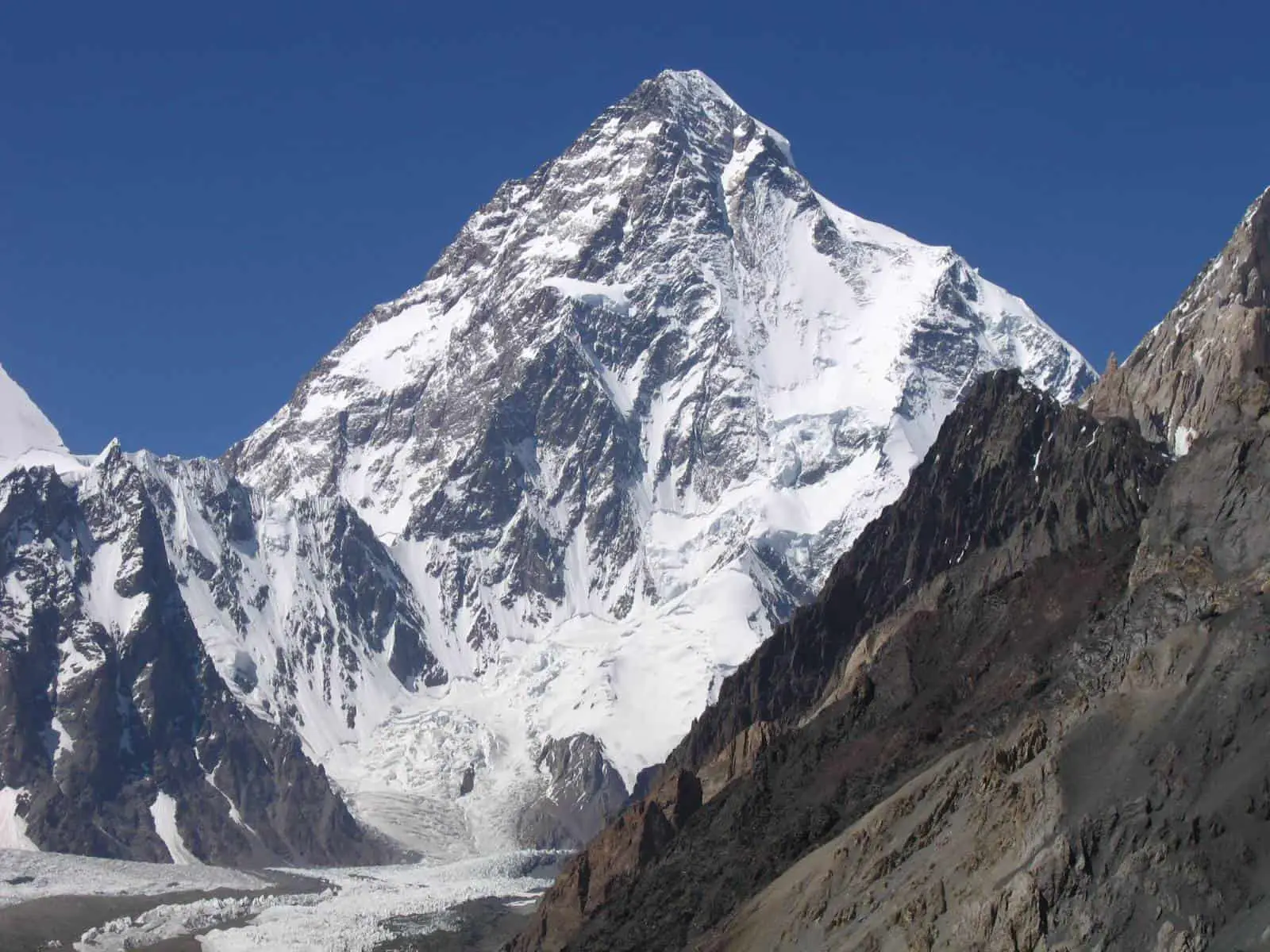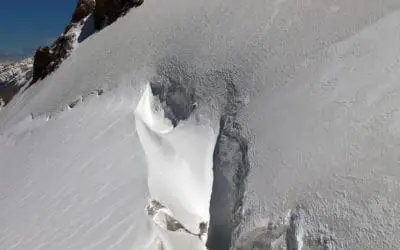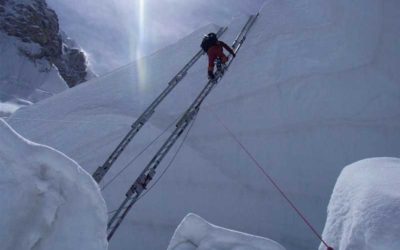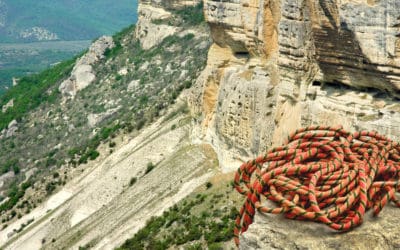
K2. Photo from Svy123
For every 20 people who summit Everest, only one summits K2. K2 is often called the Siren of the Himalayas. It’s also one of the most dangerous mountains in the world – the fatality rate on K2 is 25%, compared to the 6.5% of Everest.
The main reasons why K2 is a tougher climb than Everest are the lack of Sherpas, support, fixed ropes and routes on K2, more unpredictable weather and avalanches, the technicality and immediate steepness of the climb and the logistics of the climb and trek.
At 8611 meters, it’s the second highest peak in the world, bested only by Everest at 8 848m. 2008 brought on one of the greatest tragedies in mountaineering history when 11 climbers died on K2 in a single day.
So, why exactly is K2 so dangerous? I’ll explain by comparing K2 to Everest, since this is the most popular 8000+ mountain to climb.
1. Different Countries, Different Rules
First off, the location of K2 adds to the challenge. Mount Everest is in Nepal, a welcoming tourist destination where visas are easy to come by and flights are relatively cheap.
The approach to Everest Base Camp is on dirt roads that are easy to hike, so you don’t get there all tired out. Added to this, you have Sherpas carrying all your gear and you stay in tea houses along the way. All in all, it’s a relatively easy experience.
Contrast this to approach to K2: this peak in the Karakoram mountain range is located in Pakistan, a notoriously difficult country to enter. Visas are not easy to acquire and the country is generally not considered a tourist destination.
Then, there’s the approach to K2: a glacier. This is not just any glacier – it’s a highly technical trek where you have a mix of glacial ice, snow, and rock that’s incredibly technical to climb and potentially dangerous.
So, even before you get to the mountain, you have to dig deep for grit and stamina. The likelihood of getting seriously injured before you even reach basecamp is high.
Lastly, there are no Sherpas or teahouses. You carry all your gear with you and have to pitch tents along the way, making the trip that much more demanding.
2. Route and Climbing Differences
Due to the frequency at which Everest is climbed, the routes are very well laid out. It also has a gentler slope and lots of zigzagging, making for easier climbing.
Furthermore, you don’t get a steep climb every day. There are only a few really difficult obstacles, such as the Hillary Step and Khumbu Icefall. Everest is generally not a technical climb.
On K2, routes are not well laid out, since there aren’t many people who feel up to the challenge of this foreboding mountain. The mountain is shaped like a triangle, so you will face a steep climb from day one, regardless of the route you choose.
Every day is a technical climb on K2, with many really difficult obstacles along the way. This climb is much more technical as well, with mixed rock, ice, and alpine climbing the whole way up.
Examples of hard rock climbs in the middle of an alpine climb are House’s Chimney and Black Pyramid. At one point at a rather high altitude, where you are already oxygen-starved, you will face the Motivator – crossing below a vast hanging glacier.
3. Remoteness adds uncertainty
While rescue expeditions above 6000m are difficult regardless of where you are, it helps to have settlements relatively close by.
On Everest, there are two small towns within a day or two of the route, which adds peace of mind. In comparison, K2 is a properly lonely mountain. If you get into trouble there, it will be a long time before anyone can reach safety.
4. Differences in Popularity
This point ties in with the previous two points. Because Everest is so popular, there are many companies with paid guides that take people up the mountain. For this reason, the more popular routes have fixed ropes, making things easier for those attempting to summit.
Clients on the paid-for tours are often called “short-roped”, since they are attached to a Sherpa with a short rope in order to get them up the mountain quickly and easily.
In contrast, K2 is not popular due to its remoteness and difficulty. This means that there are no fixed ropes and no “short-roped” clients. Every member of the team must contribute to the success of the team and must be an experienced and skilled mountaineer.
I heard/read someone who famously said ‘’You climb Everest to tell people a story at parties. You climb K2 if you want to become one of the best mountaineers’’. While I don’t agree that this is always the case, I see where the person is coming from.
5. More Avalanches on K2
Yes, mountain weather is always unpredictable, I know. Some mountains are known for a greater degree of unpredictability, though.
K2 is situated farther north than Everest, making for incredibly foul weather that’s highly unpredictable. You really never know what you will face, so you can’t count on a lull in the weather giving you the window you need to reach the summit and get back to safety.
Avalanches are also much more common on K2 than on Everest.
For this reason, a successful summit on K2 is as much ascribed to luck as it is skill. When you have a look at the list of fatalities on K2, you will see some very prominent, highly accomplished mountaineers among them, which is a really scary thought.
Siren of the Himalayas
Despite its deadly reputation, new expeditions attempt the summit each year, answering the siren call that is K2. Will you try it?
Written by Felix

About me
Hi! I’m Felix. When I’m not spending time out in the mountains, I like to write about my hobbies. That is how Mountain Homies was created. On this site, I try to gather all the juicy information about Mountaineering that I have learned since I started. Happy adventures!
Related Articles
3 Ways to Spot and Reveal a Crevasse (And Avoid It)
So, how do you spot a crevasse and – more importantly – avoid falling into one? In this article, I will have a look at what crevasses are and how to detect them…
3 Clever Ways of Crossing A Crevasse
When you’re mountaineering in snow country, you will undoubtedly encounter some crevasses. These are scary, since you don’t always spot them…
Mountain Climbing vs Rock Climbing: 5 Biggest Differences
The key differences between rock climbing and mountain climbing are the gear requirements, environmental risk, geographical locations, weather and…
Stay Up to Date With The Latest News & Updates
Join Our Newsletter
The owner of this site is a participant in the Amazon Services LLC Associates Program, an affiliate advertising program designed to provide a means for sites to earn advertising fees by advertising and linking to amazon.com.



